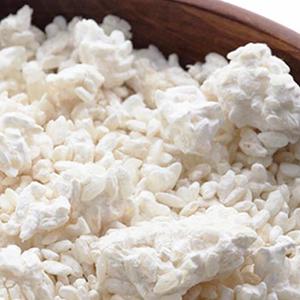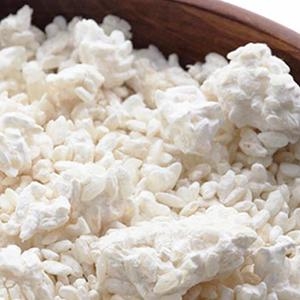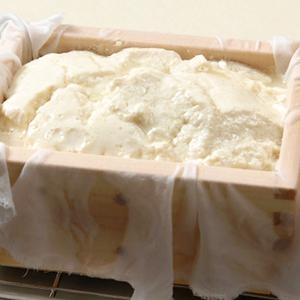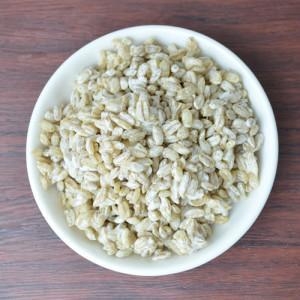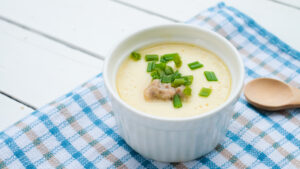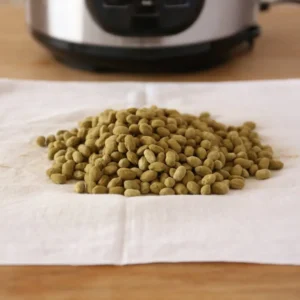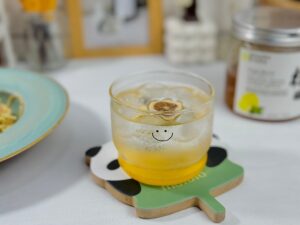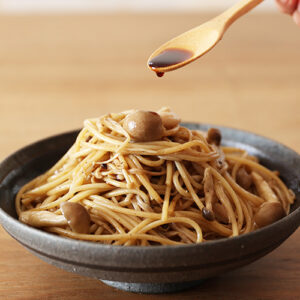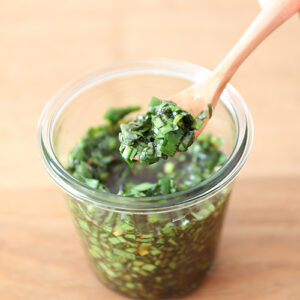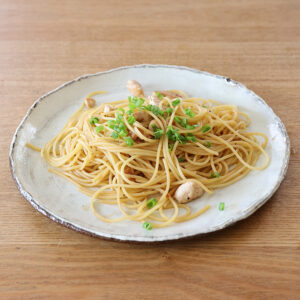Welcome to Kawashima the Japan Store. In this tutorial, we will explain the foolproof way to make rice koji using a koji starter that will be bred on rice grains.
What Is Rice Koji?
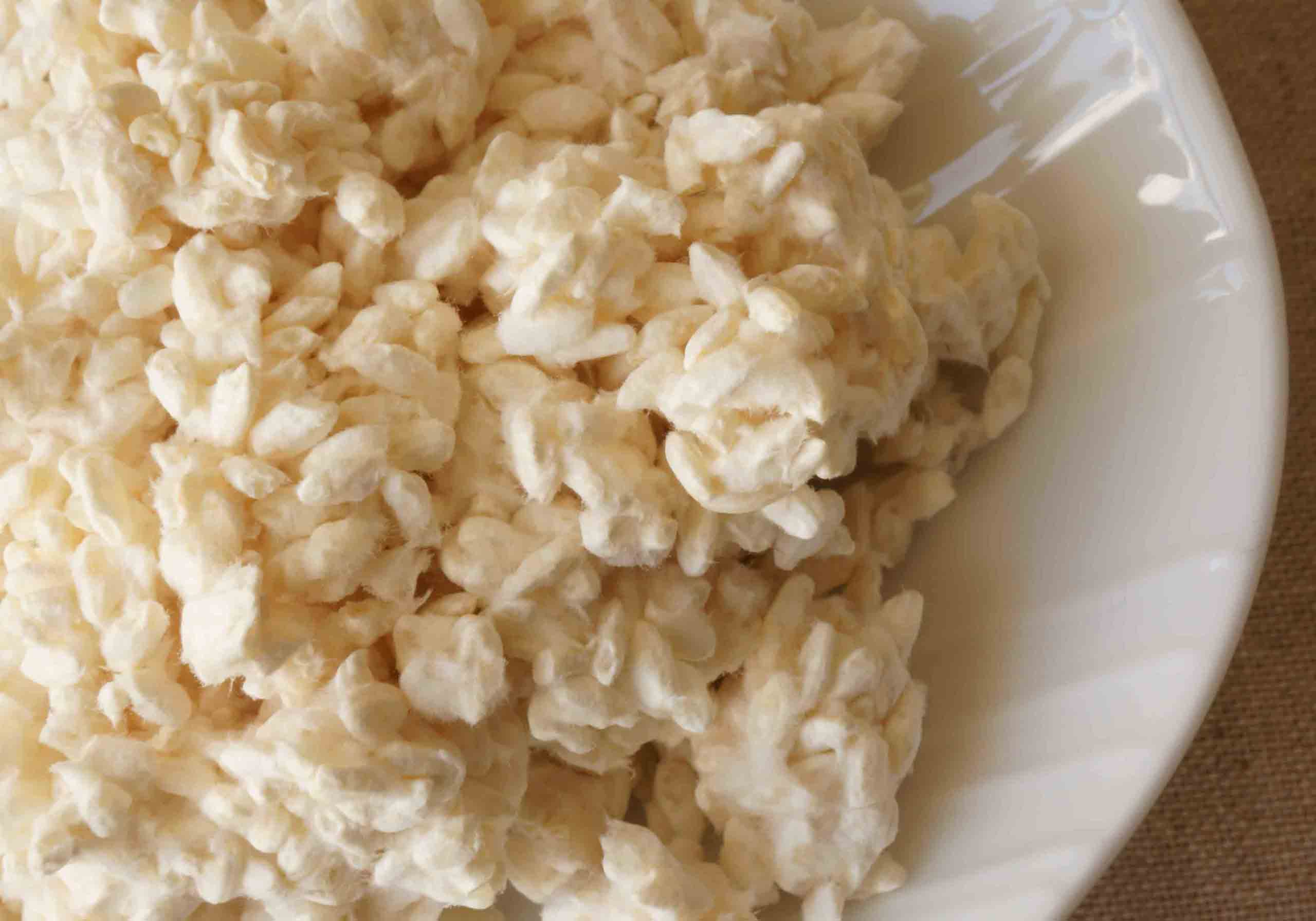
Koji is a famous mold that is popular in Japan. It is the basic foundation of amazake, soy sauce, sake, and other traditional Japanese fermented foods. The mold, scientifically called Aspergillus oryzae, is usually inoculated on all kinds of steamed grains like rice, soy, or barley.
Rice koji is a type of koji that is made using white rice as the base. This type of koji is the most famous one. To make rice koji, steamed rice is sprinkled with koji starter (koji seed) and kept at a controlled temperature. When the mold starts to cover the rice grains, the koji is done and can be used as an ingredient.
Recommended Koji Starters
Koji And Its Healthy Benefits
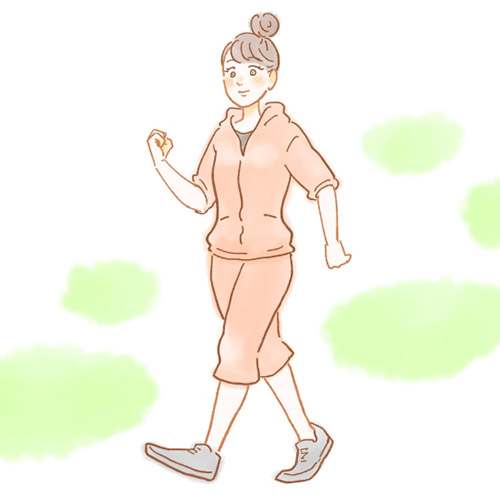
Koji is known to have a lot of healthy benefits. It contains enzymes, amino acid, vitamins, and minerals.
Koji helps the body to absorb nutrients due to its abundant enzymes. It is rich in vitamins that improve fatigue recovery and cell regeneration.
Moreover, oligosaccharides that reside in koji feed the good bacteria in the intestines and improve the intestinal environment. Good gut health contributes to strong immune system, mood improvement, and overall body health.
Koji is also known to contain kojic acid, an anti aging component that prevents sun damage on skin, age spots, and scars.
Learn More About Rice Koji in These Articles!
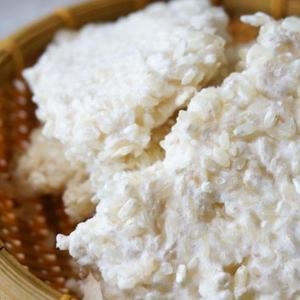
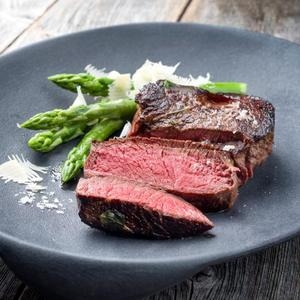
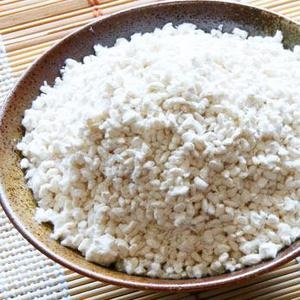
The Great Points of Handmade Rice Koji
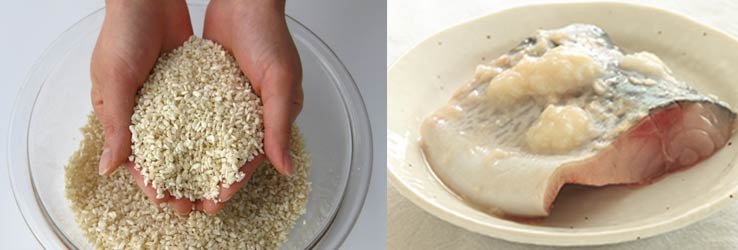
You know exactly what ingredients are used.
Formerly, in the Japanese family, miso, soy sauce, amazake, and others were made at home with koji. However, the eating habits change with the time, and miso, soy sauce, amazake changed from “things to make” to “things to buy”. Because of that, there are many people who became uneasy because they don’t know what type of rice is used to make koji-based foods such as miso and salt koji (salt koji) sold in the market. If it’s homemade, you can make it with pesticide-free rice prepared by yourself so it’s safer and healthier.
Handmade is fun!
When Kawashimaya staffs tried to make handmade rice koji, they’re impressed that their hands became so smooth. It’s a famous story that because of sake-making, the hands of chief brewer at sake (Japanese liquor) brewery is beautiful. In rice koji, there are a lot of components that make the skin beautiful.
Moreover, if you make rice koji by yourself, it will take a lot more care and attention. Thus, the miso and amazake you made from the homemade rice koji will be even more delicious.
It’s more economical.
When making miso, you will need koji in kilograms. If you buy it, it will be really pricey. For that, if you make your own koji using koji starter (Aspergillus oryzae), it will be much more economical because you can even make rice koji from 15kg of rice.
Now, let’s start making rice koji!
How To Make Rice Koji
This tutorial was provided by the koji manufacturer themselves, and summarized by Kawashima The Japanstore. Feel free to use this as a reference to make rice koji. We hope that you can make good rice koji.
Now, let’s get to it!
Tools And Ingredient to Make Rice Koji (For 720g Koji)
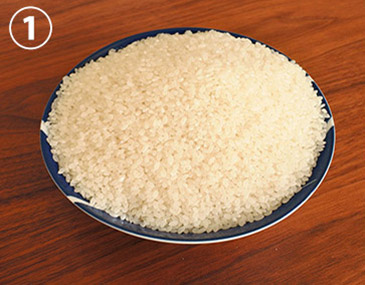
Rice 600g
We recommend using Sasanishiki and Akitachomachi variant, which has high content of amylose. However, if you can’t find them feel free to use any rice available. Usually short grain white rice is used for koji making, however there are some cases when people uses long grain rice as well.
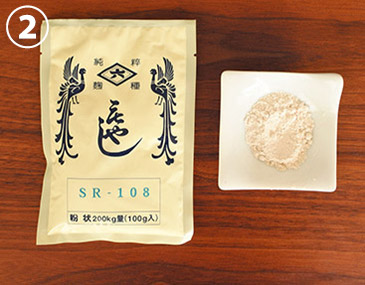
Koji Seed(koji starter)5g
※The quantity of our shop’s koji seed is quite a lot, so it’s easy to succeed even for people not familiar with koji making (for people who make it for the first time). Therefore, it may be different from the amount stated in the products of the koji seed. Please note it beforehand.
→ Go to Koji Starter Product Page
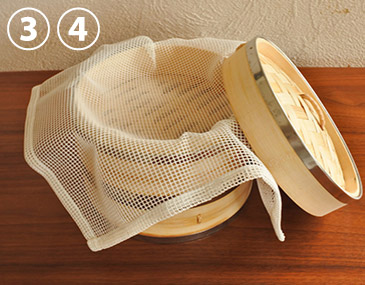
Steamer Cloth & Steam Basket

Towel/dish cloth
It’ll be more convenient if you have one each of the cotton and polypropylene towel/cloth
→ Go to Towel/Dish Cloth Product Page
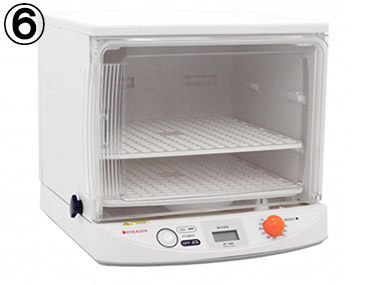
Koji Fermenter Device
You can also use a food warmer device
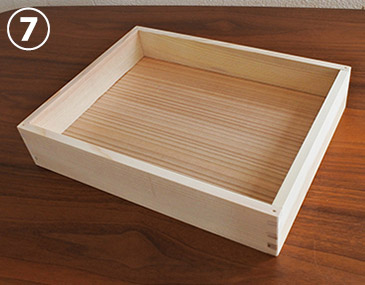
Koji Wooden Tray (Kojibuta)
A wooden square tray used specifically for koji making. If you have multiple koji lids, they can be stacked on top of one another. That’s why they are called kojibuta or koji lid.
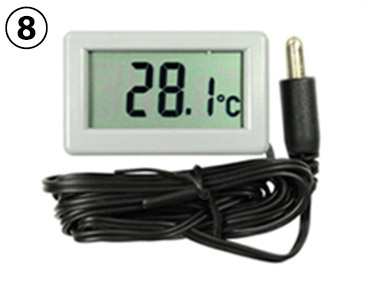
Thermometer

Rice Paddle

Strainer
To strain koji starter
In order to avoid the breeding of unwanted germs, wash the tools clean and properly. You can disinfect the tools by boiling them.
The Process of Making Rice Koji
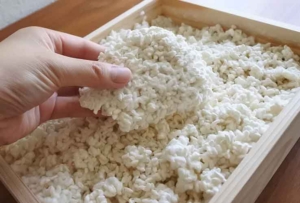
How to Make Rice Koji
Ingredients
- 600 g Rice
- 5 g Koji Starter (feel free to use more koji starter for stronger fermenting power)
Instructions
- Wash the rice.
- Soak the clean rice in water
- Drain water from the rice
- Steam the rice for 40 minutes
- Put the rice on top of cloth layered koji tray. Sprinkle the koji seed (koji starter) on steamed rice (seeding)
- Wrap the rice with cloth and keep it warm in a food warmer device.
- Do the first maintenance of koji: If the koji temperature reaches 40℃, open the cloth wrapping and spread and stir the rice to untangle it.
- Move the wrapped rice to koji box
- Second maintenance of koji: 5-6 hours after you move the rice to koji box, do another maintenance. Untangle the koji clump and stir it around
- After several hours from the second maintenance, when the temperature of the koji rice rises above 40℃, please do another maintenance again.
- Completion of koji
Read below to find out more about the process in details.
Step 1 – Wash the rice
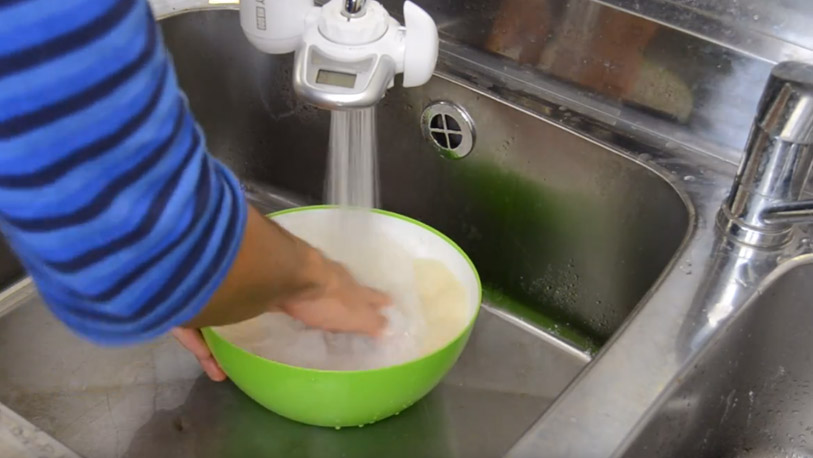
Wash the rice properly, so the dirt and the bran that remains on the rice are washed off. Rinse it about 2-3 times until clean.
Step 2 – Soak the clean rice in water

Soak the rice in clean water. The period of time to soak the rice depends on the temperature; but in spring and fall it’s 6-12 hours, while in summer it’s 3-5 hours, and in winter it’s 15-20 hours. When the temperature is too high such as in the summer, it’s okay to soak and put it around 20 hours in the refrigerator.
Cover the bowl with plastic wrap so germs and bacteria don’t enter the bowl.
Step 3 – Drain water from the rice
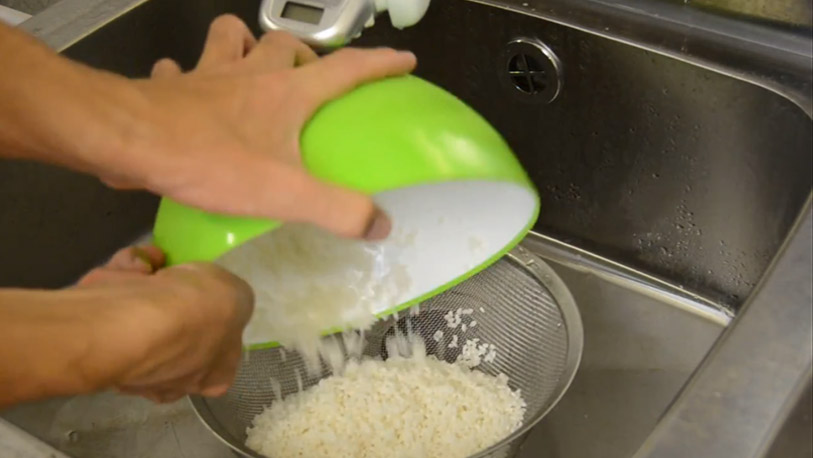
Drain the rice with strainer, then leave it for 2-4 hours so the water is drained properly from the rice. If there’s water left, there might be unevenness in the rice grains during the steaming process. If the rice is cooked unevenly, the koji won’t be good. Please take time to drain the water from the rice completely.
If you change the angle of the strainer or stir the rice gently when draining the rice, you can drain it completely. However, if you shake the strainer intensely to drain the water, the rice will crack and become powdery. If there’s cracked or powdery rice grains, there might be unevenness when you cook it. Leave the rice on the strainer as it is so the water is drained properly.
Step 4 – Steam the rice for approximately 40 minutes
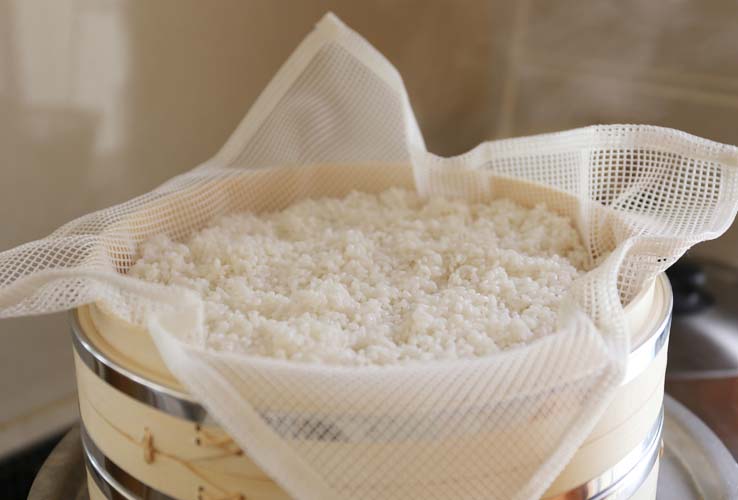
Wrap the rice with a steamer cloth, then steam it with steaming basket. For the first 5-10 minutes, steam it without putting on the cover/lid. Make sure that the steam is going up. When steam penetrates from the surface of rice and the grains start to become transparent, cover the steaming basket.
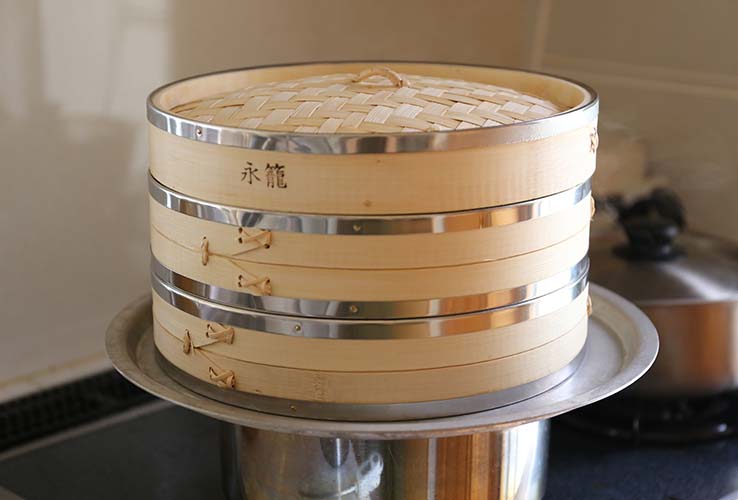
Steam it for 40 minutes (recommended) after you put on the lid. It’s important to steam the rice with strong steam. The steaming process here affects the finished result of koji greatly.
When using a seiro/bamboo steamer
When steaming rice with a seiro/bamboo steamer, it’s good to leave the bottom basket empty. By keeping distance between hot water and the rice, it prevents the bottom surface of steamed rice from becoming too sticky and messy.
When steaming in bamboo steamer that has two or more levels, change the basket order in midway of steaming process to prevent unevenness. When half of the recommended steaming time has passed (recommended steaming time is 40 minutes, so half of it will be 20 minutes), please switch the place of first and second row (if your bamboo steamer has two or more rows).
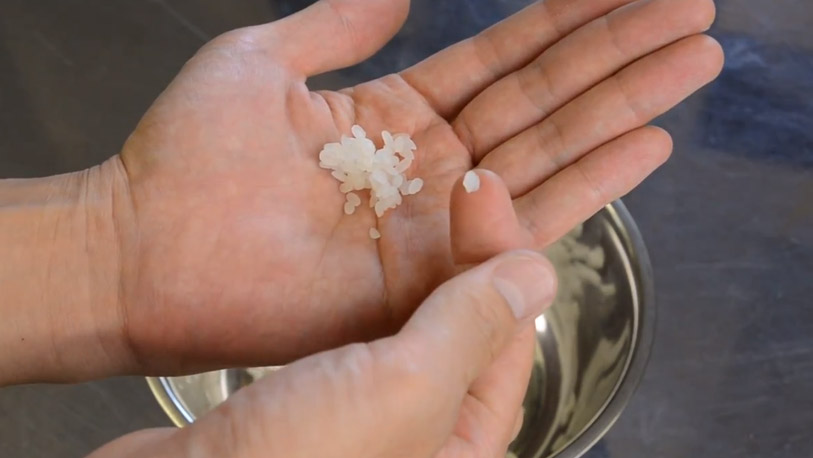
The condition of good steamed rice is that if you take one piece of rice, and pinch then crush it, its texture is just springy like a mochi. If the rice is still hard even after steaming, or if the rice doesn’t seem cooked enough, you can steam the rice again.
When you steam rice for koji making, we recommend you to use a bamboo steamer. You can steam about 300g of rice with one row of 18cm-sized (diameter) bamboo steamer. Also, it will be more convenient if you use tetron cloth (tetron is one kind of polyester) when steaming, because the rice won’t cling to the cloth.
Step 5 – Sprinkle the koji starter on the steamed rice (Seeding)
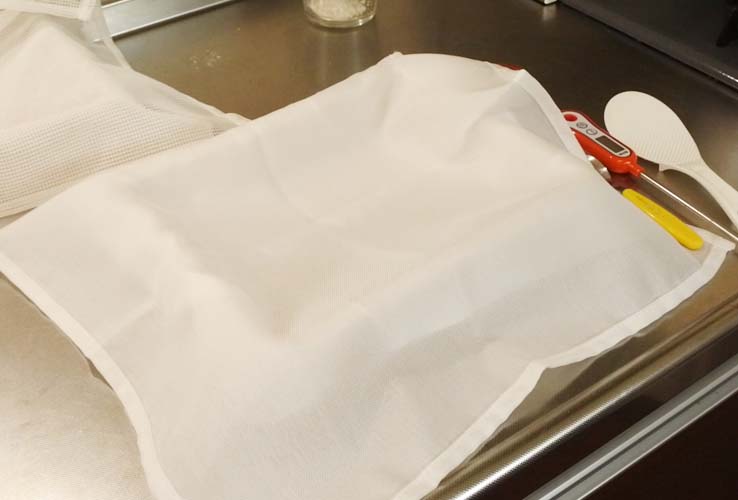
When the rice is cooked, spread a clean dish cloth on the koji wooden tray (kojibuta). Spread the steamed rice on it evenly.
Here, we’re using a cloth made from polypropylene. Please use a dry cloth. Do not use the cloth that was just used for steaming for the next other steps, because it’s too damp/wet.
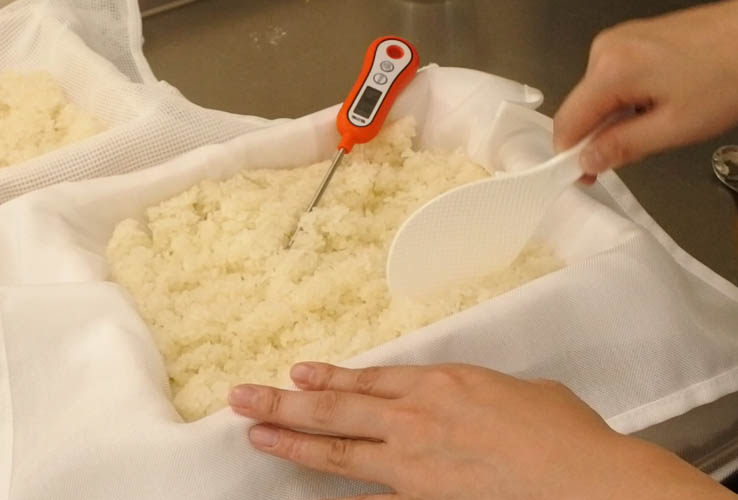
Spread the rice on the cloth-layered tray with a rice paddle, so the heat drop a little. Measure the temperature of the rice with a thermometer and spread the koji starter on it when the rice temperature reaches around 45℃.
This step is called “seeding”. When you sprinkle the koji starter (seeding), it’s convenient to use tea strainer so the koji starter won’t clump and spread evenly.
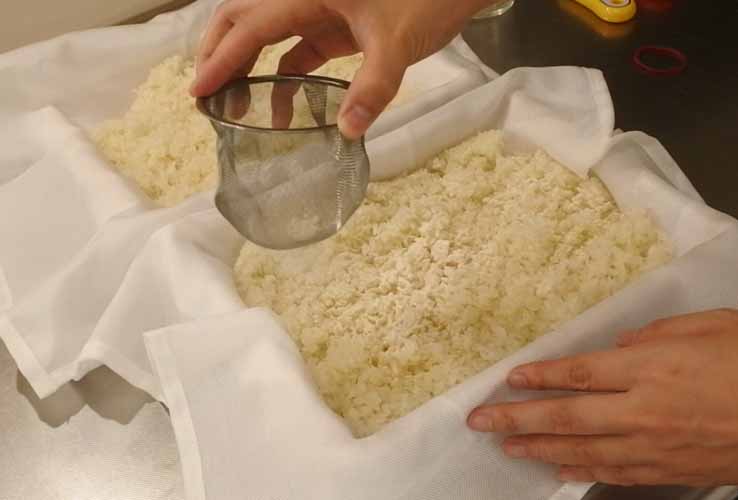
If you sprinkle the koji starter when the rice is still too hot, it will kill the spore (Aspergillus oryzae) in the koji starter. But, do not leave the rice until it’s completely cooled down. Fermentation process won’t go well on cold rice. After estimating the timing when the temperature of rice is 45℃, quickly mix the koji starter on rice. Untangle the clumps of rice and mix thoroughly so that the koji starter spreads all over the rice. If you didn’t mix it completely, other miscellaneous germs and bacteria may grow.
Please pay more attention in winter, as the temperature drops quickly. In some cases it’s better to make rice koji in a higher room temperature. If you sprinkle the koji starter properly and carefully mix the whole rice, the seeding step is successfully done.
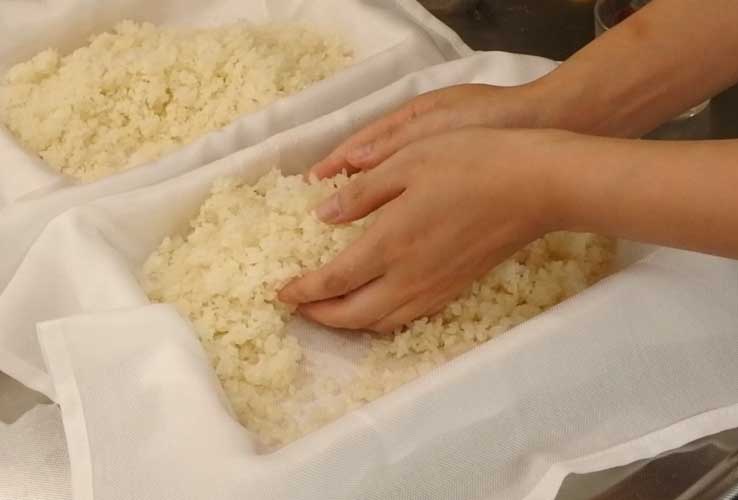
When you finish the seeding, quickly gather the rice together and wrap it with the clean cloth. When wrapping it with cloth, wrap it into a small round shape. Apply force when scrunching the koji into one ball with the cloth.
The amount of koji starter
When it’s made by professionals, 20g of koji starter can be used for 15kg of rice. But in the case of making small amount of rice koji (500g-2kg) at home, it’s easier to succeed if you use 2 or more times of the specified amount of koji starter. This is because the koji starter will stick to and absorbed on the cloth that wraps the steamed rice, and thus the Aspergillus oryzae is difficult to propagate.
Therefore, in this recipe, the koji starter used is about six times as much as the specified amount. We attached the table of the amount of the koji starter used below. But, if you put too much koji starter on the rice, it won’t affect the result of the rice koji. So don’t worry.
Step 6 – Keep the rice warm
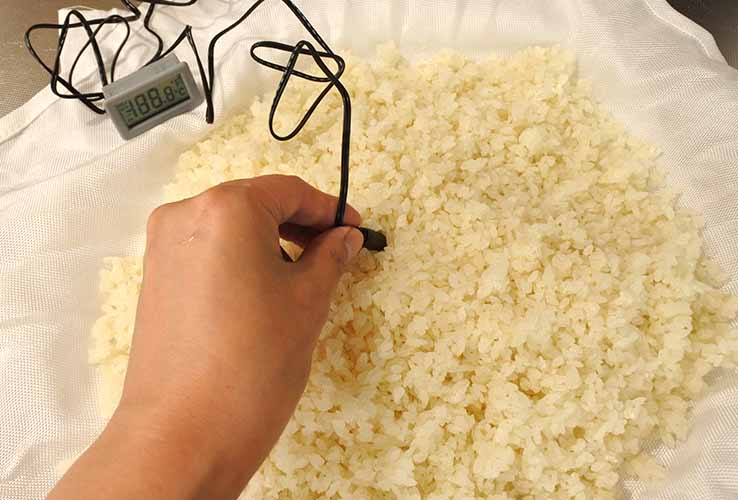
Measure the temperature of the rice with a thermometer. Wrap with a polypropylene cloth and press it so the rice will be in a small round shape with cloth wrapped around it. After that, tie the cloth with rubber bands.
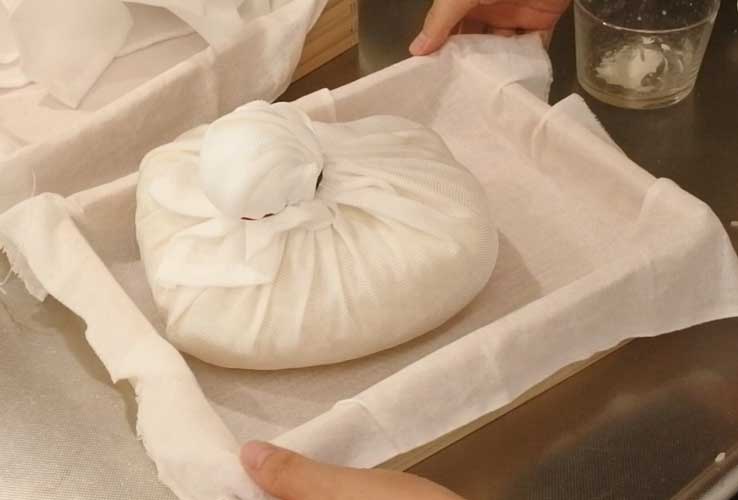
We recommend using polypropylene cloth and bleached cotton cloth to wrap the rice. The fabric holes on polypropylene cloth is small that prevents the spillage of koji starter and let extra water flow outside.
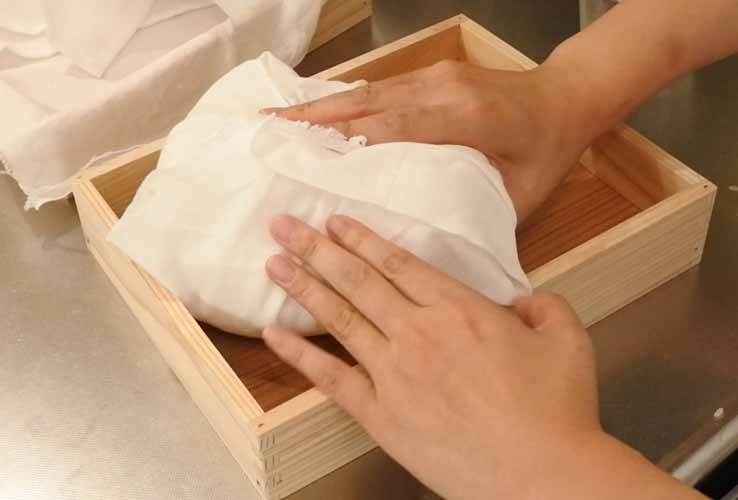
Wrap the cotton cloth over the polypropylene cloth from the outside. The cotton cloth around the polypropylene cloth will absorb the dampness coming out from the rice. If you’re only using cotton cloth, the water from the steamed rice will be absorbed too much. In that case, the rice koji will not be finished nicely.
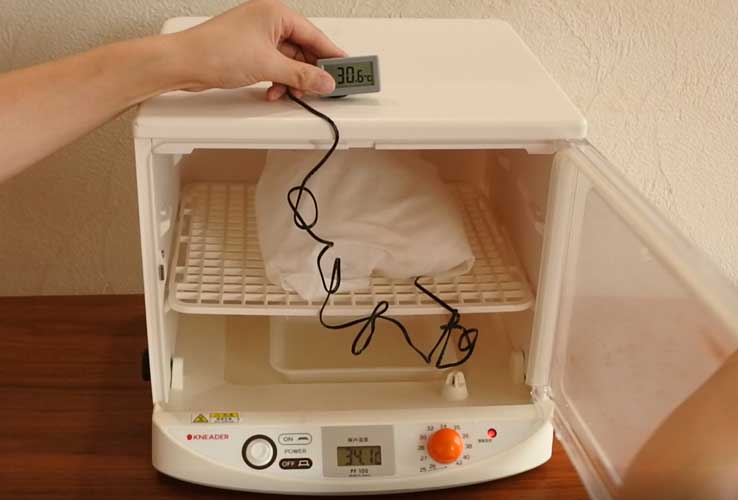
Put the rice that is wrapped by the polypropylene and cotton cloth in to the koji fermenter device or a food warmer, and keep it warm for 18-20 hours. The optimal temperature for koji starter to propagate is at 35-40℃. Keep the rice warm around this temperature.
Depending on the season, temperature of the room, and the amount of koji starter being used, the speed of rice temperature change may differ. Please set the temperature of fermentation device between 32-42℃, and keep checking the temperature of the rice as needed so it’s between 35-40℃.
The ideal rate of humidity is from 70% until 80%.
Low humidity can dry out the rice during the warming process. Therefore, the koji starter won’t propagate properly. The ideal rate of humidity for the koji starter to propagate is from 70% until 80%. If it’s humid enough that on the front part of the koji fermenter device (food warmer) there will be lots of condensation droplets, then it’s the best environment for breeding the koji starter.
However, do not let the dew condensation dripping off and wet the koji. Make sure to wipe the dew condensation that dripped off from the device’s ceiling frequently.
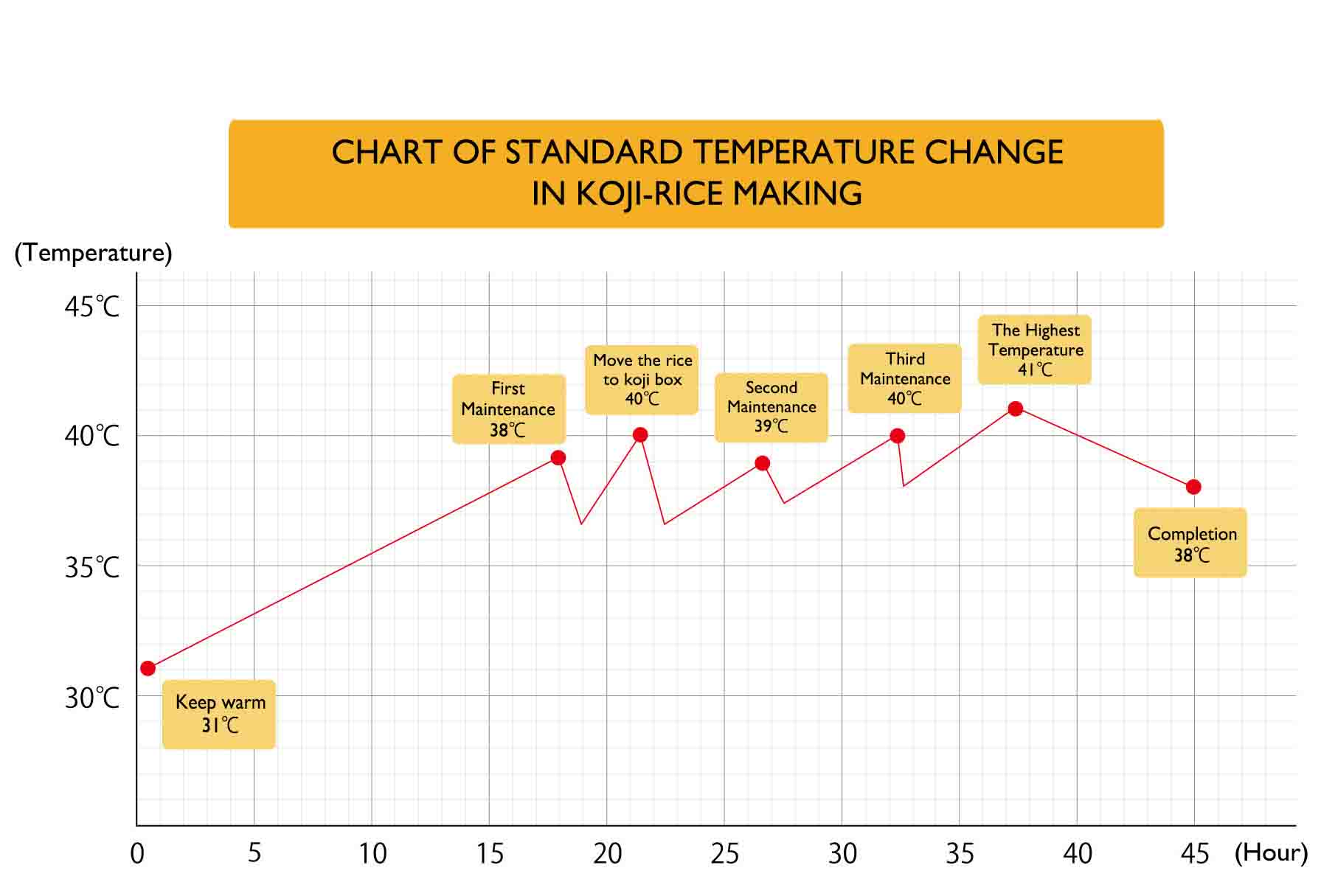
Important point: please measure the balance of the drying speed of rice with the propagation speed of the koji starter.
This chart is the reference for the temperature. The temperature change may vary as the difference in the method of making rice koji. Also, standard temperature change may differ depending on the koji being used. The rice’s temperature change will vary depending on these points: the amount of rice and koji starter being used, environment (temperature and humidity), steaming condition of rice, etc. Please do the timing of each changes flexibly while looking at the temperature, aroma, and fermentation condition of koji.
Depending on the rice temperature, you may not need to do the first, second, and third maintenance (7th, 9th, and 10th step).
Step 7 – First maintenance of koji
When it’s about 18-20 hours from when you started warming the rice koji, due the activity of koji starter, the temperature of the steamed rice will rise and there will be the sweet aroma of koji from the fermentation device.
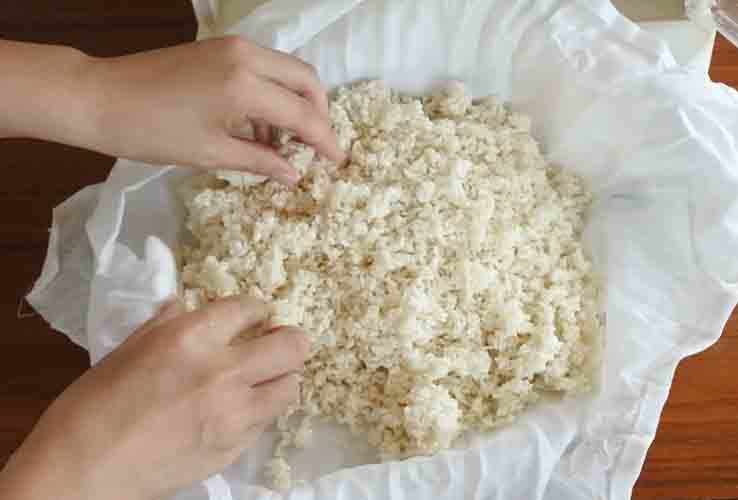
When the temperature of the steamed rice rises to about 38℃ to 40℃, please undo the wrapping cloth and observe the appearance and aroma of the steamed rice and its humidity.
If the fermentation progress is going well, the rice grains surface will become white-ish with the hyphae of koji starter (Aspergillus oryzae), and the unique sweet aroma of koji will come out.
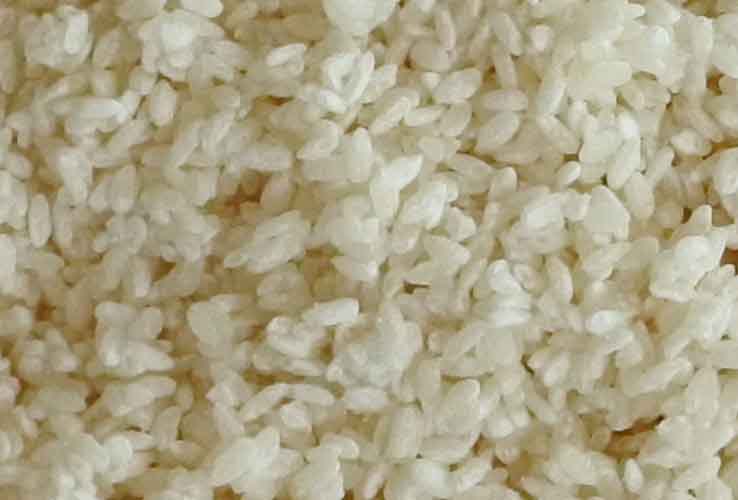
In this state, please untangle the clumps of rice to make the temperature at the same level on all the grains. This is called the first maintenance. With this, you are also spreading oxygen to every corner of rice.
Please untangle rice one by one quickly. It’s important to mix the rice quickly so that the temperature of rice does not go down too much. Once properly mixed, wrap firmly with the cloth as before. Do not forget to wipe the dew condensation on the ceiling of the device/box.
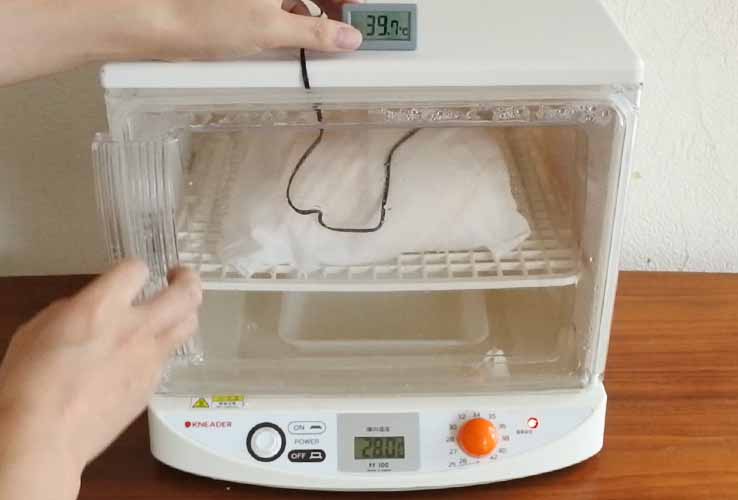
Please pay attention to the rapid rise in the temperature of rice. Depending on the situation, the temperature may exceed 40℃ in several hours after the start of warming. In that case, please do the first maintenance at that point. When the rice’s temperature exceeds 45℃, some koji starter spores will die.
On the opposite, there are cases that even more than 20 hours have passed, but the rice temperature still haven’t risen above 40℃. In that case, please wait for the temperature to exceed 40℃. If this happens, try increasing the temperature setting of the koji fermenter device and to raise the rice temperature.
By doing the maintenance, air will spreads throughout koji, and accelerate the breeding of koji starter. If the temperature of rice is too high, quickly stir the rice to lower the temperature.
Step 8 – Move the wrapped rice to koji lid
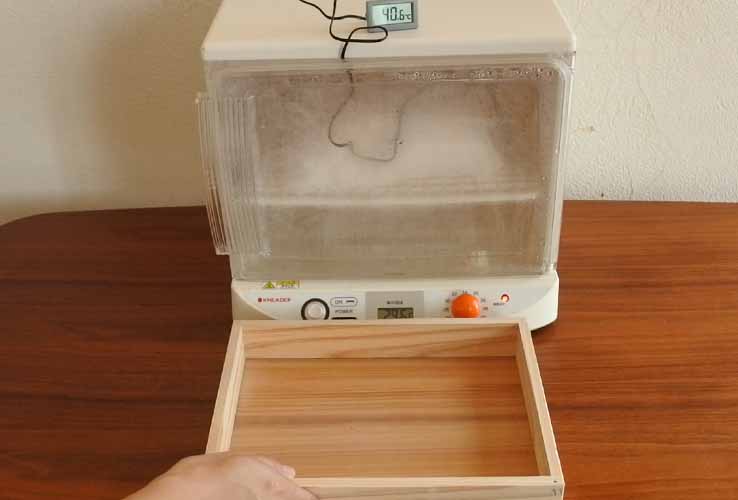
After about 3 hours passed from the first maintenance, when the temperature of rice exceeds 40℃, move the rice from the cloth to the koji lid, a wooden tray made specially for koji making. Untie the cloth, then carefully put the rice (which now has become half-done rice koji, so we will call this rice koji from now on) into the koji lid. Spread it flat and put it back to the fermenter device.
At this moment, again, quickly untangle the clumps of rice and stir the whole of rice koji. Like before, do it quickly so that the temperature of rice doesn’t go down as much.
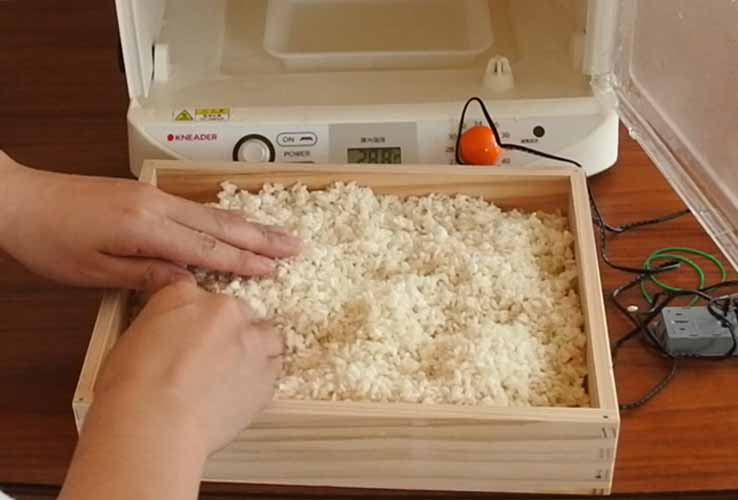
You can’t decide the timing of this step by only the timing the duration of fermentation. It’s necessary to do a visual check around the fracture of the koji and decide it from the temperature of rice koji.
As a guideline for the timing of this step, the rice koji’s temperature must be above 40℃.
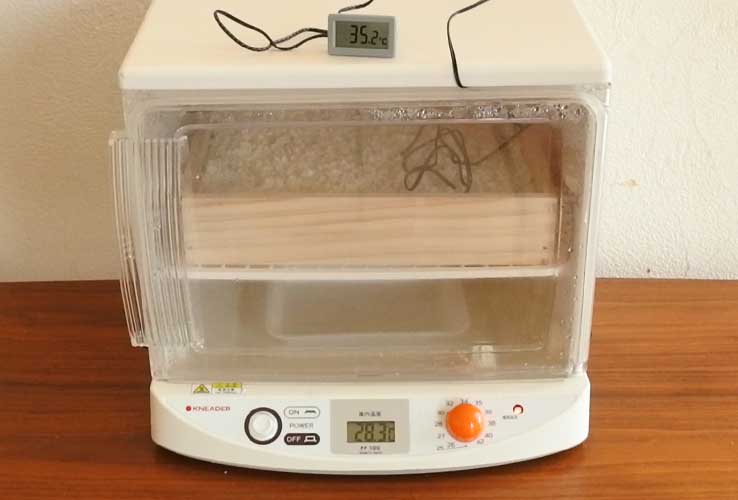
When you moved the rice koji from to cloth the koji lid, the moisture of the rice will begin to evaporate, and the drying speed of the rice will increase. It is important to balance the drying speed of rice with the propagation speed of the koji starter (Aspergillus oryzae).
For the ideal temperature change of rice koji, please refer to this chart.
If the temperature doesn’t rise for a long time, don’t move it to the box, please go to the next step as the rice koji is wrapped in cloth.
Step 9 – Second maintenance of koji
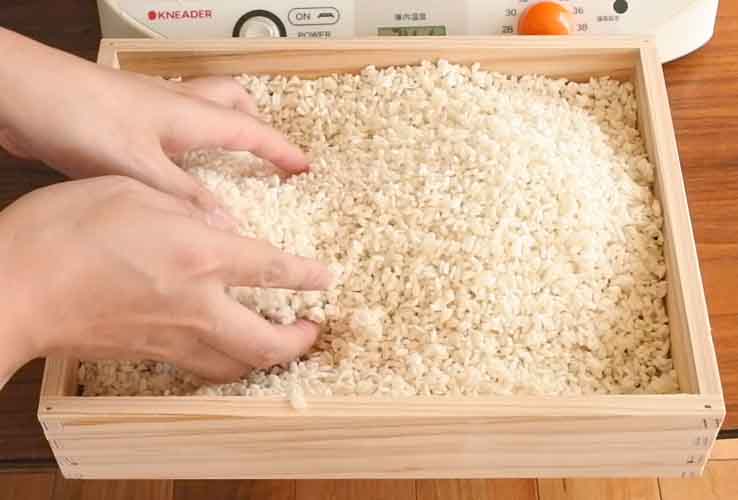
When 5-6 hours have passed from when you move the rice koji to the koji lid (step 8), the koji starter will further propagate and the temperature of the rice koji will rise again to 40℃.
At this moment, once more, quickly untangle the clumps of rice and stir the rice koji. This time also, keep in mind to do the maintenance quickly so that the temperature of rice doesn’t go down rapidly. The standard is, you can stir the rice koji until it’s temperature goes down to around 38℃.
After that, it will be good to keep doing the maintenance of rice koji at any time when the temperature rises above 40℃.
Step 10 – Third maintenance of koji
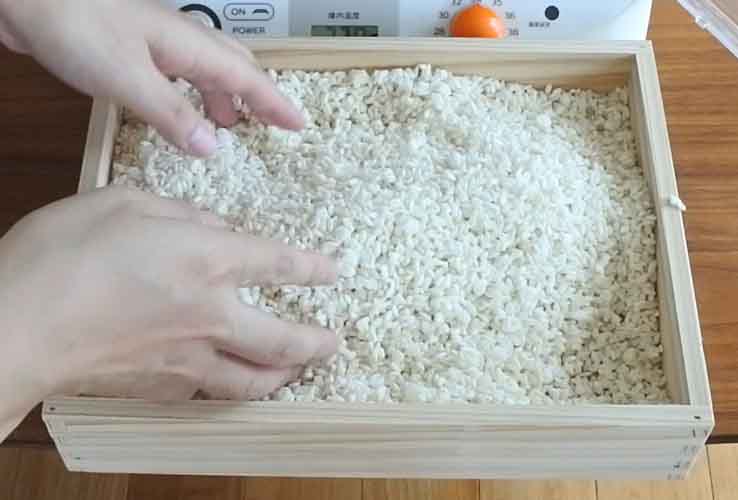
After several hours from the second maintenance, when the temperature of the koji rice rises above 40℃, please do maintenance again.
If the fermentation is progressing, a faint sweet aroma like a chestnut will come out from the rice koji.
Keep the temperature above 40℃ for 6 hours in the second half of the progress!
About 12 hours from here until the rice koji is finished, keep the rice koji’s temperature above 40℃ for 6 hours, to let sweet compound of glucoamylase works. Then, the strong sweet-tasted rice koji will be completed.
Usually, it needs approximately 45 hours from the start of keeping the rice warm until the completion of koji, and about 2-3 times of maintenance will be needed. Depending on the fermentation condition, it might be necessary to do the fourth maintenance as well.
Also, depending on the situation of koji starter, the rice’s temperature may not rise above 40℃. In that case, don’t do the third maintenance, and just wait for the temperature to exceed 40℃.
Step 11 – The completion of koji
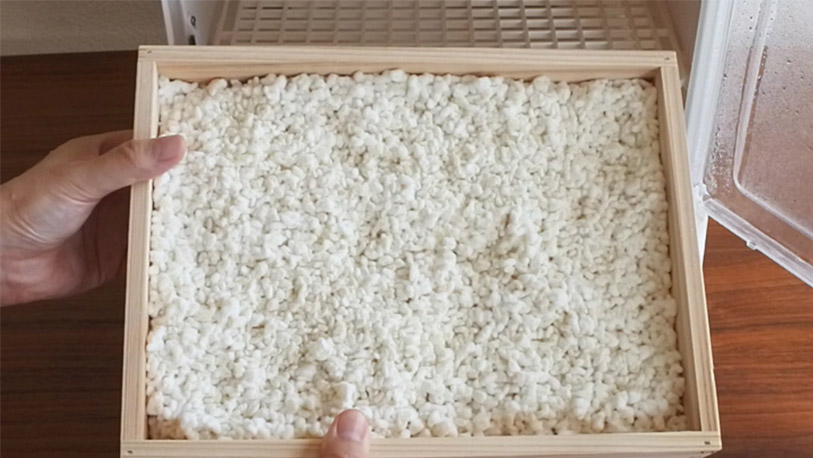
Koji will be completed several hours after the process work, approximately 42 to 50 hours from sprinkling the koji starter on steamed rice (seeding process).
When the whole process is done, confirm the appearance of the rice koji. Observe if the hyphae of Aspergillus oryzae are rooted in the steamed rice and the hyphae look like to have attached itself to the rice grains. If the state of the rice koji is like that, and the scent like chestnut has come out, then the rice koji is completed.
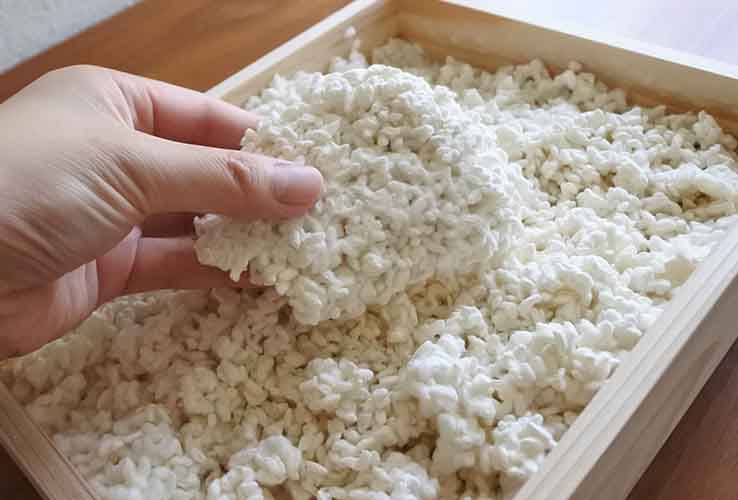
If the koji is finished, you can take it out from the fermenter device.
Because the speed of the reproduction of Aspergillus oryzae differs depending on temperature and humidity, the time it takes for koji to be completed will vary. Please look and decide the time when the koji is finished from its appearance and aroma.
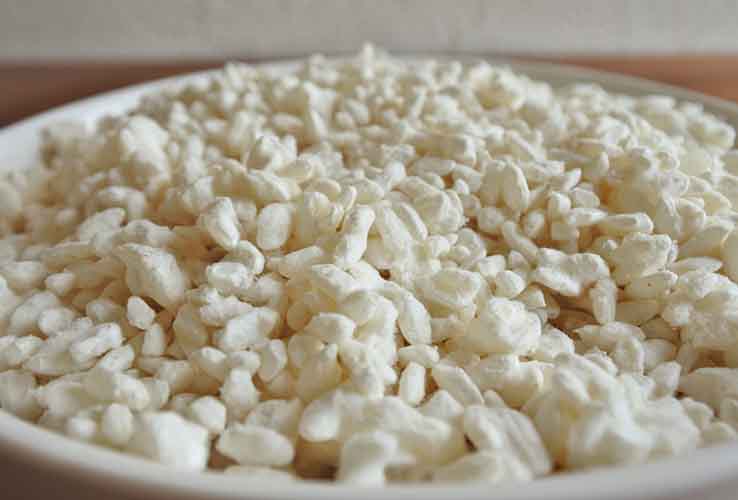
The signs of a completed koji: the hyphae of koji starter stretches out, the rice sticks to each other and becomes a plate shape, it is also easy to disentangle by hand.
The sign of ideal rice koji are when the Aspergillus oryzae propagated well on the surface of rice grains as well as rooted nicely into the rice grains, and the whole body of rice is white.
Try Out The Finished Koji by Making Amazake (Sweet Sake)
Let’s immediately make amazake (sweet sake) from your freshly made koji. If a rice koji can be made into sweet and delicious amazake, it can be said that it is a good rice koji. You can make amazake to check whether your rice koji is a good one or not.
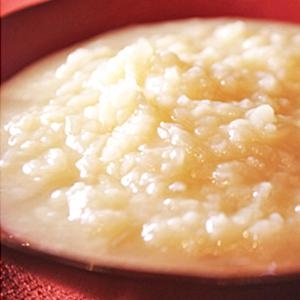
How to Store Rice Koji
Freshly made koji is recommended to be used immediately for optimal taste.
Even if it is kept in the place where the temperature is low and the wind circulation are good, if the mass of the rice koji is thick, the fermentation will not stop and the quality of the koji may deteriorate.
If you plan to save the rice koji for 1-2 days after it’s finished, please untangle the clumps in rice koji by separating the grains with your hand. Then, spread it as thin as possible and keep it in a cool place.
Store in the refrigerator: about 2-3 weeks
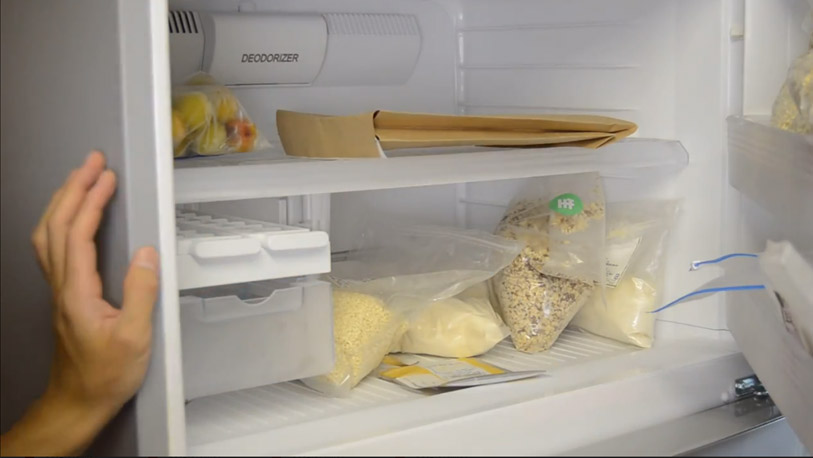
When storing in a refrigerator, put it in a hygroscopic (material that tends to absorb moisture from the air) paper bag. In the refrigerator, it’s possible to save the rice koji for about 2-3 weeks.
Store in the freezer: about 1-3 months
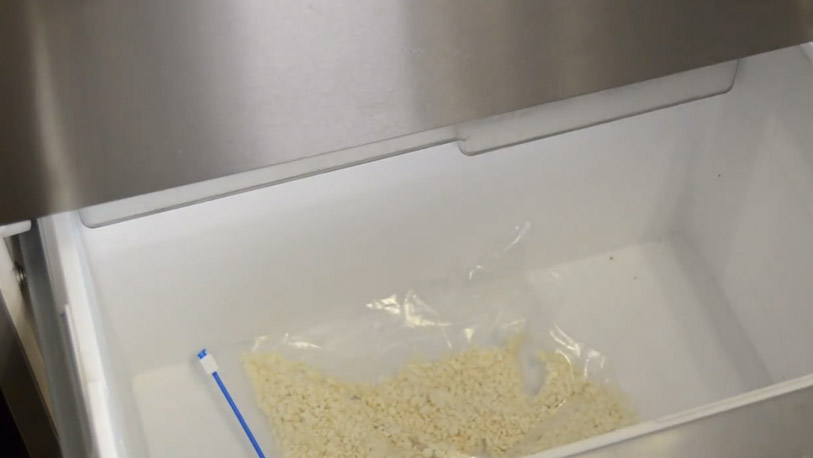
If you don’t plan to use it for a long time, put it in a zip lock (a plastic bag with zipper/fastener), etc. and keep it in the freezer. It’s possible to save the rice koji for about 1-3 months in freezer.
Chart of Ideal Temperature Change in Making Rice Koji

Estimated Time Schedule for Making Koji
It is an example of the time schedule to make koji. Feel free to use this chart as a reference. This time schedule is just an example. The time lines may vary depend on the variation of methods in the making of rice koji.
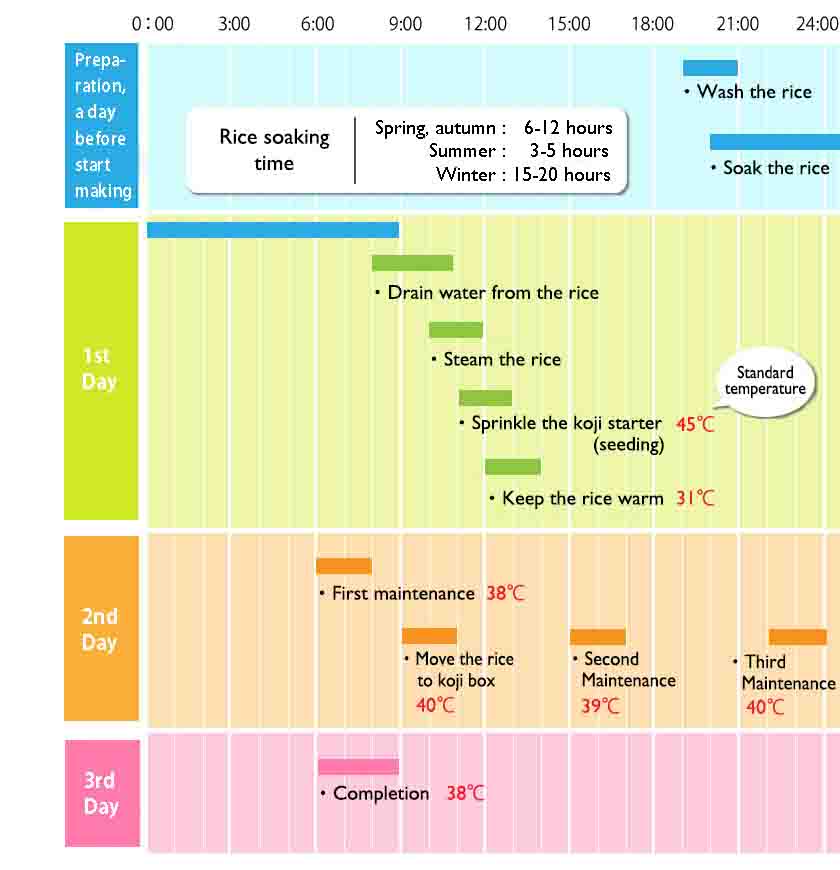
What Makes A Good Rice Koji
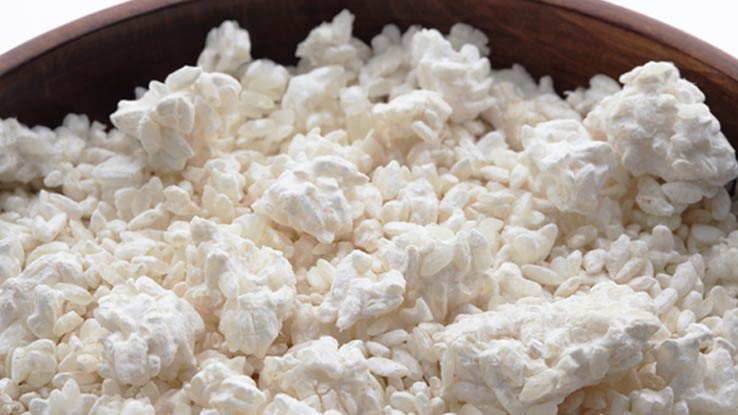
Color
The color of rice koji is pure white. The koji starter (Aspergillus oryzae) grew well on the surface of rice grains and the hyphaes are digged nicely into the rice.
Texture
When you pinch it with your hand, it has a soft and elastic feeling, and it get disentangled easily without being hardened.
Weight
The weight of rice koji is increased by about 20% of the original weight of rice (the increased weight is the weight of the fungus of koji starter).If the increased weight is more than 20%, there is too much humidity/too moist. Also, if it’s 10% or less, it will not be a good koji because its humidity is low.
Taste
When you bite the rice koji, and there’s a unique aroma like the scent of chestnut coming out, that’s the indication of a good rice koji. If it’s too sweet, it’s indicating that the rice koji is too humid, and the glycation (a haphazard process that impairs the functioning of biomolecules), has already begun.
Frequently Asked Questions About Rice Koji Making
- Can I make rice koji with brown rice?
-
Of course. Brown rice koji has its own unique features like a deeper aroma and a sweet taste with a hint of bitterness. So it can be an interesting taste to try out.
- What kind of food should I make with fresh homemade rice koji?
-
You can make all kinds of things with fresh rice koji. For example you can make amazake, sake, miso, soy sauce, and others.
Read more about how to use koji here.
- Can I make koji with other types of grains?
-
Yes! There are three most common types of koji: rice, wheat/barley, and bean. You can make koji with one of these grains. It all depends on what kind of food that you will make using the koji.
Rice koji is best for amazake, sake, soy sauce.
Bean koji is best for miso.
And wheat/barley koji is good for making barley miso and barley/wheat soy sauce. - What kind of rice is the best to use to make rice koji?
-
Rice with low stickiness is suitable for making koji.
- The rice koji that I made has a reddish brown color and strange smell. Can I still use it?
-
There is a high possibility that unwanted germs are mixed and propagated during the fermentation process. Please do not use it.
Sterilize the fermenter and tools that you will use thoroughly and try increasing the amount of seed koji the next time you use it (about 3-4 times). It will be easier to ferment.
Also, please be careful about temperature control during fermentation.
- Do I use the same cloth that I used for steaming for the warming/fermentation process?
-
Do not use the same steaming cloth for the seeding and the process after that. This is because the cloth would absorb too much moisture during steaming.
After seeding, cover the rice with different sheets of cloths: two sheets of Tetron (inside) and cotton cloth (outside). These layers are good for preventing dew condensation and drying of the rice.
- We use steamed rice for koji making, but can I use rice that was cooked with a rice cooker instead?
-
If the rice is cooked with a rice cooker, the water content will be too high (60% or more) and the end result will not be good. In order to make good quality koji, rice with 36-38% amount of water is recommended. Therefore, steaming is a better method.
- I want to cook koji in a small amount, about 500g to 2kg. Is there anything I should be careful about?
-
During seeding, please seed quickly to the rice temperature won’t drop below 35°C. If you live in a cold area, or making koji during winter, be careful of the temperature drop.
If the rice temperature drops too low, it will be difficult to raise the temperature in the subsequent processes.
If you are not confident in your koji making skill, you can add more koji starter on the rice so the koji mold will propagate easily. Sprinkle koji starter about 2-10 times the suggested amount.

